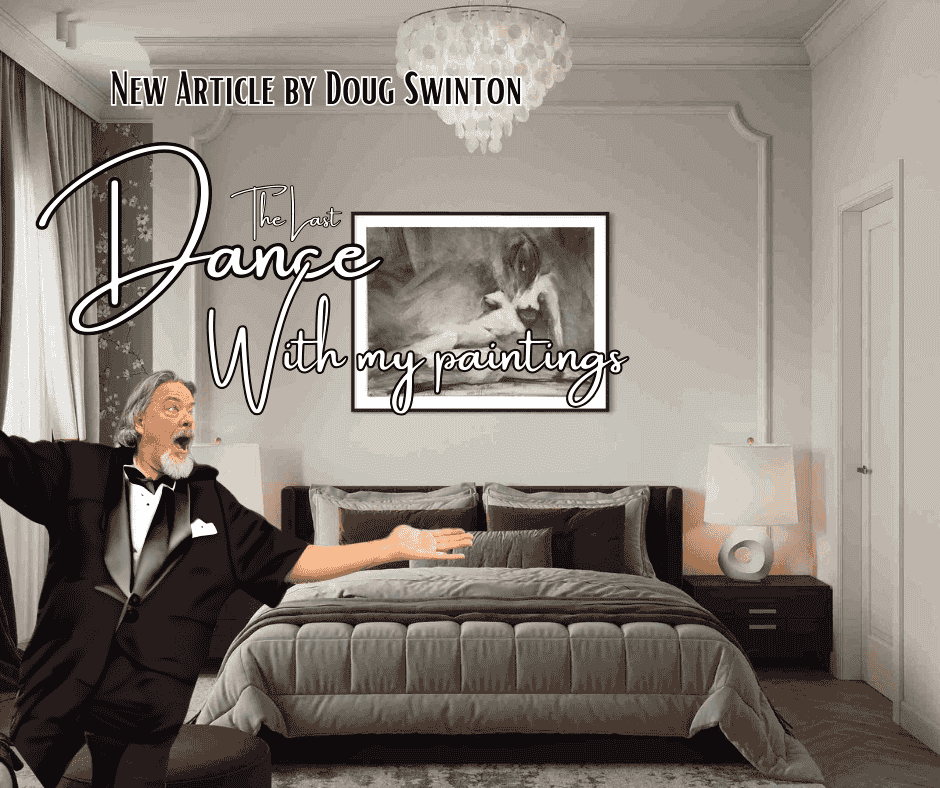10 Things About Painting With Red & White
- Doug Swinton

- Jun 30, 2020
- 3 min read
Updated: Mar 15, 2021
A short primer about painting with red and white in honour of Canada’s birthday.
Red is the colour of love, warmth and even aggression. It’s passionate and demands attention. For all the things that red is, one thing it is not is neutral. But don't be fooled by red! Even though a red might look intense, it's true nature may be completely different.
What about White? It's certainly dull compared to red but always necessary on your palette. Read on to find out how to make white come alive and why the most convincing whites are actually quite colourful.
Red:
1. Red is the first colour to leave the visual spectrum. Red has the shortest wavelength and therefore has the least amount of oomph when it comes to visual distance. If you look out over a long landscape, you will see that there is very little red in the distance. This is the reason warms colours tend to come forward and cool colours tend to move away. Red leaves the spectrum first, then orange, then yellow, until you are left with the distant longer-wave colours - green purple and blue.
2. Keep it bright. Red turns pink when you add white to it. White will not only desaturate the colour, it will bring out the red’s true nuance, its pinkness. You have two options when you want to lighten your red. Purchase a brighter red OR dull down whatever is around the red to make it appear brighter.
3. Red is not always warm. Red can be warm or cool. Like any colour, the temperature is actually determined by the colour that is around it. Alizarin Crimson which is a delicious deep red will look warm when placed amongst the greens of a forest but will look cool if placed on the shadow side of a portrait.
4. Bright does not always mean light. Don’t be fooled by red. Even though a red might look bright in intensity, when you look at it through a Value Finder or take a photo of it and turn it black and white, it will look very dark, almost black. Be careful where you place reds!
5. 5- Use it more! My guess is that you don’t use enough red. When I look at people’s palettes I always see big squeezes of blues and greens and the tiniest dots of reds. Try using more red on your palette! It’s not as scary as you think.
White:
1. We know that ‘white’ reflects all the colours of the visible light spectrum. That means in order to paint convincing whites we must be able to paint the subtle colour shifts and value changes. Your white subject matter will reflect the colours of the objects that surround it. Therefore, the most convincing whites are actually quite colourful.
2. White dulls colour. When white pigment is added to any colour it produces a ‘tint’ of that colour. That means anytime you add white to a colour you are making it duller. White can be used to lighten a colour, but too much white causes dull, bleached out chalky looking paintings.
If you want to make a yellow brighter you must use a brighter yellow. You cannot make it brighter by adding white. Adding white will only dull the yellow.
3. Adding white makes colours come forward. Opaque colours tend to advance and transparent colours tend to recede. Adding white to any colour will make it more opaque and will make it “pop”. The addition of white makes a transparent colour opaque and cools the original colour. If you want to lighten a colour but don’t want it to pop try using a “Mixing White”. Mixing whites have less tinting strength.
4. White cools colours. We have all seen this phenomenon with red. A warm, vibrant red will quickly change into a cool pink with the addition of titanium white.
5. Use white sparingly. I try to leave white off my palette as long as I can. I start with my darks easing my way toward the lighter colours. Keeping white off the palette for as long as possible helps in keeping your darks crisp and transparent.








monero miners monero miners
monero miners monero miners
monero miners monero miners
monero miners monero miners
monero miners monero miners
monero miners monero miners
etc mining etc mining
monero miners monero miners
monero miners monero miners
monero miners monero miners
monero miners monero miners
monero miners monero miners
monero miners monero miners
etc mining etc mining
monero miners monero miners
monero miners monero miners
monero miners monero miners
monero miners monero miners
monero miners monero miners
monero miners monero miners
etc mining etc mining
monero miners monero miners
monero miners monero miners
monero miners monero miners
monero miners monero miners
monero miners monero miners
monero miners monero miners
etc mining etc mining
monero miners monero miners
monero miners monero miners
monero miners monero miners
monero miners monero miners
monero miners monero miners
monero miners monero miners
etc mining etc mining